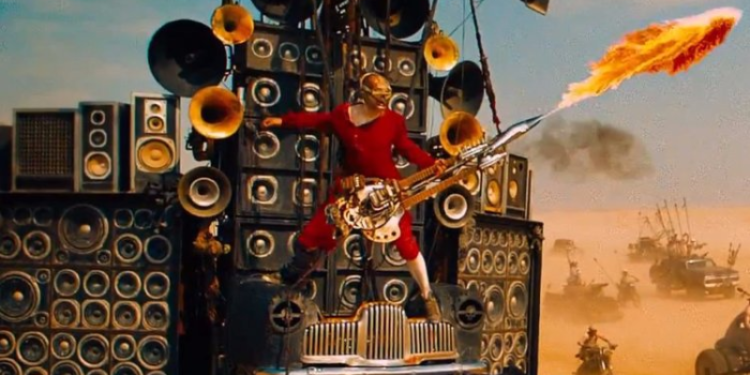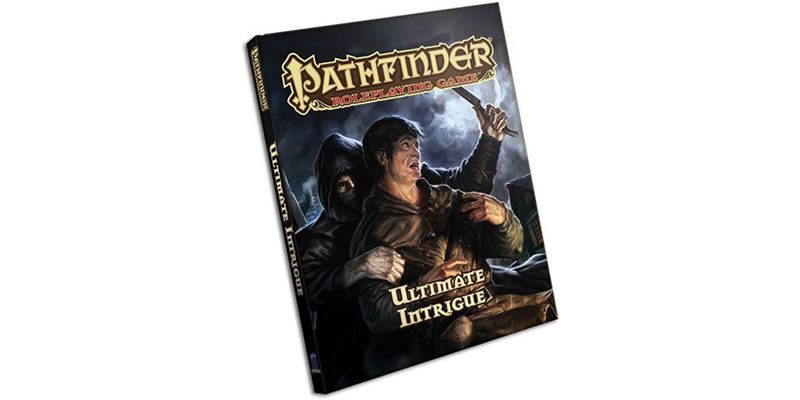The Bard Class, Part Seven

After I revisited the History of the Bard a few months back, I knew I would eventually get around to covering Pathfinder, and a commenter requested that I also pull in Monte Cook’s variant in Book of Eldritch Might II. As the end of the year draws close, I really want to get this off my to-do list and start the new year with at least one of my Tribality projects put back to bed. The PFSRD bard is here.
Part One | Part Two | Part Three | Part Four | Part Five | Part Six | Part Seven
Pathfinder
The flavor text here – which might be a cut-down version of the rulebook text, I’m not checking – presents the bard as something more like a trickster wizard who also inspires allies. Music, performance, or indeed any form or artistry are merely common threads, not a given.
- d8 Hit Dice. I want to say that this was the first bard to shift to d8s?
- 6 + Int skill points. Most of the skills are class skills for them, as you’d expect.
- +3/4 BAB progression.
- Good Reflex and Will saves, poor Fort saves.
- Proficiency in simple weapons, and longsword, rapier, sap, shortsword, shortbow, whip, shields, and light armor. No arcane spell failure chance while wearing light armor.
- Bardic spellcasting scales up to 6th level spells. I’ll look at their spell list separately, but the wiki format is going to make it hard to get a good sense of what’s there. You know, a forest-for-the-trees issue. Charisma is their casting stat, and they use Spells Known to cast spontaneously. They can respend one spell six times in their progression.
- Bardic Knowledge lets bards add half their class level to Knowledge checks, and they can roll Knowledge checks untrained.
- Bardic Performance is one of their Big Features.
- A bard can use a performance for a number of rounds per day equal to 2 + Cha modifier + (2 x bard level).
- Standard action to start, free action to sustain. Changing effects takes a new standard action. This improves to just taking a move action at 7th level, and a swift action at 13th.
- Ended by effects that prevent free actions, such as acute total blood loss syndrome.
- A performance has auditory, visual, or audiovisual components. An audience that can’t receive that kind of input is immune to that performance.
- There are 13 different performance options. The bard learns them at specific levels.
- Countersong lets the bard replace allies’ saves, or their own saves, vs. sonic or language-dependent effects with the result of their Perform checks.
- Distraction is Countersong for illusions.
- Fascinate imposes a Perception penalty on an audience, as long as there’s not an active combat nearby.
- Inspire Courage is the bread-and-butter feature, as it grants a scaling (from +1 to +4) bonus to attack, damage, and saves vs. charm and fear. This can affect the bard.
- Inspire Competence boosts an ally’s skill checks (scaling from +2 to +6), for skills where this seems remotely possible. This can’t affect the bard.
- Suggestion is an add-on to a pre-existing Fascinate effect.
- Dirge of Doom causes nearby enemies to be shaken. If they get a saving throw, that’s not obvious from the text. Shaken is a -2 to just about any d20 roll.
- Inspire Greatness is where the bard starts playing your personal theme song and everybody knows you’re about to go house on these dudes. As the bard advances, they can simultaneously target more characters with this. Greatness turns out to mean +2d10 + Con modifier Hit Dice and temporary hit points, +2 to attack rolls, and +1 to Fort saves.
- Soothing Performance lets the bard spend 4 rounds to cast mass cure serious wounds, and also ends the fatigued, sickened, and shaken conditions. This is pretty amazing party-wide healing. Notably, their spellcasting healing tops out at mass cure moderate wounds.
- Frightening Tune is for scaring a single target enough to make them run away. It does allow a save.
- Inspire Heroics is when the bard starts playing, uh, your other theme song? The… defensive one? I dunno, but it’s +4 to AC and saves.
- Mass Suggestion does what it says on the tin; like Suggestion, it requires Fascinated targets.
- Deadly Performance kills one target, from excess of joy or sorrow. It’s exactly the save-or-die effect that it sounds like. Personally I’m disappointed that apoplexy and the Killing Joke aren’t listed emotional options here.
- Versatile Performance at 2nd level lets the bard define their performance type. Each performance type lets them substitute their Perform bonus for the skill bonus of two other skills. They gain additional performance types every 4 levels. That’s potentially a lot of skills they don’t need to buy, if they can afford to wait for it to just become a Perform skill.
- There’s an Advanced Versatile Performances thing introduced in Pathfinder Player’s Companion: Blood of the Beast, but it’s complicated and clearly comes along later, so I’m not diving into it.
- Well-Versed at 2nd level grants the bard a +4 bonus to saves vs. other bards’ tricks – bardic performance, sonic effects, and language-dependent effects.
- Lore Master at 5th level allows the bard to take 10 for Knowledge rolls. Once per day, scaling to 3/day, they can choose to take 20 on a Knowledge roll.
- Jack of All Trades at 10th level lets bards roll for untrained skills. At 16th level, all skills are class skills for them. At 19th level, they can take 10 on any skill check.
So there’s a lot going on here, and I honestly can’t begin to sum up their spell list. If you know the general theme of the 3.x bard spell list, there are fewer surprises in this one, but a lot of designers coming up with weird tricks you’ll want up your sleeve once in a very long while.
There are three basic threads of features here: skill use, performance (a skill), and lore (…also a skill). I think the emphasis on performance is heavy enough that the class flavor text I mentioned above is a touch misleading. It’s still within the standard bard story and themes, and eventually it addresses the action economy problems around performances that plague 3.x bards. From a 5e perspective, it’s regrettable that you have to play so much of the game before your class starts working right. It’s interesting that there’s no direct Song of Freedom parallel, and it’s a lot more aggressive in pushing skill use features than the 3.x bard. Overall, though? “Let’s try d8s for bard Hit Dice” is probably the core of its legacy in fantasy gaming.
As a reminder, I’ve already covered the bard in the Pathfinder 2e playtest rules.
Book of Eldritch Might II
This book contains variants on magic, including a variant bard class with a full overhaul of bardic magic. It’s important to understand that this book represents end-stage third-party development for 3.0, rather than relating in any way to 3.5.
- d6 Hit Dice.
- Cannot be of lawful alignment. (Side tangent, can a bard be lawfully married, or do they have to get neutrally married or chaotically married?)
- 6 + Int skill points. Robust list of skills, though again it’s the 3.0 skill list so there are a lot of crufty skills.
- +3/4 base attack bonus.
- Good Reflex and Will saves, poor Fortitude saves.
- Proficiency in simple weapons, and longsword, rapier, sap, shortsword, shortbow, whip, shields, and light armor. No arcane spell failure chance while your total Armor Penalty is -3 or less.
- Spellsongs replace the whole of bard spellcasting, collapsing six levels of spells down to three, which are called spellnotes, spellchords, and spellmelodies.
- A spellnote behaves as a 1st-level spell and takes a move-equivalent action to cast.
- A spellchord behaves as a 3rd-level spell and takes a standard action to cast. The caster can convert 5 spellnote slots into a spellchord slot, or the reverse operation.
- A spellmelody behaves as a 5th-level spell and takes a full-round action to cast. The caster can convert 3 spellchord slots into a spellmelody slot, or the reverse operation.
- As they advance, bards get a large number of each of these slots, compared to the number of spell slots a 3.0 bard gets of each spell level. The bonus slots for high Charisma is also comparatively generous.
- Inspire Courage, Inspire Competence, Countersong, and Fascinate are all spellsongs, as you’ve probably guessed.
- Bardic Knowledge lets the bard roll d20 + level + Int modifier to know something about any person, place, or thing, with DCs based on obscurity like you’d expect. The design here is very 3.x; with the perspective of fifteen more years it’s obvious enough that Common information should be DC 0, Uncommon DC 10, and the rest of the DCs downshifted to match, because it’s no fun (and undermines the core concept) for the bard to know less than common knowledge, and in general the things you can learn from this are things the DM wants the player to know.
- Weave Notes at 5th level lets you spend a second spellnote, when you’re casting a spellnote, to improve the casting in one of three ways: more duration and range, a harder spell DC, or more damage. In essence, you get a huge number of spellnotes because you’re going to weave some of them to create what amount to 2nd-level spells. There will, of course, be comparable features for spellchords and spellmelodies.
- Evasion at 9th level is, well, Evasion.
- Weave Chords at 12th level lets you spend two spellchords instead of one when you cast a spellchord, for the same list of improvement options.
- Improved Evasion at 17th level does what you think it does, if you know 3.x.
- Weave Melodies shows up at 20th level and does the same things as its predecessor features.
This has all the hallmarks of being a primary spellcaster (most of their features are about spellcasting) that doesn’t receive the full progression of 9th-level spells. That +3/4 BAB is nice and all, but all of their features prevent the full-round action required for iterative attacks if they also cast a spell this round. As a result, they’re not great at a lot of the things you really want the party’s bard to do, like healing. Dropping 1d6 healing every round, or 1d6 + 50% (so 1 to 9 points of healing) isn’t keeping up with incoming damage even at low levels.
It’s interesting, at least, for bards to have their own take on spell structure, but its impact on action economy isn’t great. As with a lot of 3.x design, and throughout Arcana Unearthed/Evolved, there are good options that are hard to recognize if you don’t already have a keen sense of system mastery. That seems to be an intended, deeply regrettable piece of 3.x design: as you gain a deeper knowledge of the game, you get to exploit it much more effectively, and thus you feel rewarded.
The good part of this is that the spellcasting is significantly fluid, and most of the spells fall plausibly within the bard’s thematic range. The bad part is that I doubt it gets out of the second-okayest-at-everything corner that the 3.x bard dwelt in, unless you’re willing to just stunlock the hardest target on the field with a zillion Stun spellnotes.
Conclusion
This has been an encore performance for the History of the Bard, and I hope you’ve enjoyed our Golden Oldies hour. Next time, I expect to trade the bard’s harp (or FIRE GUITAR) for the fife and drum, as I start on the History of the Warlord.



